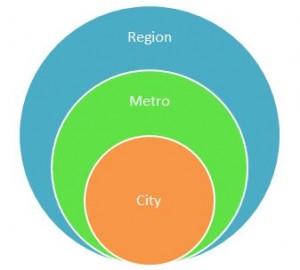You worked hard to write blogs that provide your audience with content they care about. Then, you took the necessary steps to promote your content via social channels (linkedin, Twitter, G+, Facebook, etc). After a few days, you start looking in your web analytics platform such as Google Analytics and understand if your content reached the right audience.
 The pages report lets you know how many people viewed your blog post. Furthermore, you see visits, page exits, and bounce rates. But this doesn’t tell you if your blog is a hit with your audience. A blog pages report, is just page view by a unanimous person somewhere out there on the interwebs, and there is no way of telling if they will ever come back and read your blog or do business with your company. Keeping this in mind, here are a few creative ways to judge your blog content using Google Tools.
The pages report lets you know how many people viewed your blog post. Furthermore, you see visits, page exits, and bounce rates. But this doesn’t tell you if your blog is a hit with your audience. A blog pages report, is just page view by a unanimous person somewhere out there on the interwebs, and there is no way of telling if they will ever come back and read your blog or do business with your company. Keeping this in mind, here are a few creative ways to judge your blog content using Google Tools.
Location, Location, Location
Our company is located in Chicago, and most of our business is U.S. based at this time. For this reason, it is important to judge our blog content by how many users in the U.S. read the blog article. When you look at the pages report in Google Analytics, use a secondary dimension to pull up the Region for each blog post. Then, look at the Metro area and City reports to see how many people viewed the post in your local, metro area or city. To do this in Google Analytics:
- Go to Content > Site Content > All Pages
- Above your page URL’s you will see a drop down called Secondary Dimension, click the drop down arrow
- Expand the visitors arrow and you will find the Region, City and Metro secondary dimensions
Google Webmaster Tools Linking
When readers love your content, they will link to it. Great content will have many links and Google Webmaster tools has this information. Instructions to find how many links there are to your blog articles, follow these instructions in your webmaster tools:
- Go to your Search Traffic reports.
- Expand Links to Your Site section
Domain Matters
Many organizations and users searching for content work for large organizations that have network domain distinctions. It is always interesting to understand if the blog content is read by someone using their home computer or someone whom works for a large corporation. It connects the kinds of corporations whom are searching for the product or service described in your blog. There is no guarantee that this organization will ever buy your services, but it’s always good to know that big organizations are interested in the content on your blog. Either way, you are able to see a full list of domain names and ISP’s whom view your blog content. To accomplish this in Google Analytics:
- Go to your Content > Site Content > All Pages
- Above your page URL’s you will see a drop down called Secondary Dimension, click the drop down arrow
- Expand the Technology arrow, and you will find the Network Domain
Conclusion
Good content takes time to create, and you want to make sure that the right audience is reading your content. Understanding whom is viewing your content is important in obtaining future business. For a website like ours, spending the time to write content that is read by the right organizations in an area where we do business is very important. The end goal should be to have the most optimized content for the right audience.
Related Posts:
3 ways to find something to A/B Test
How to become a great web analyst
When to switch your web analytics platform